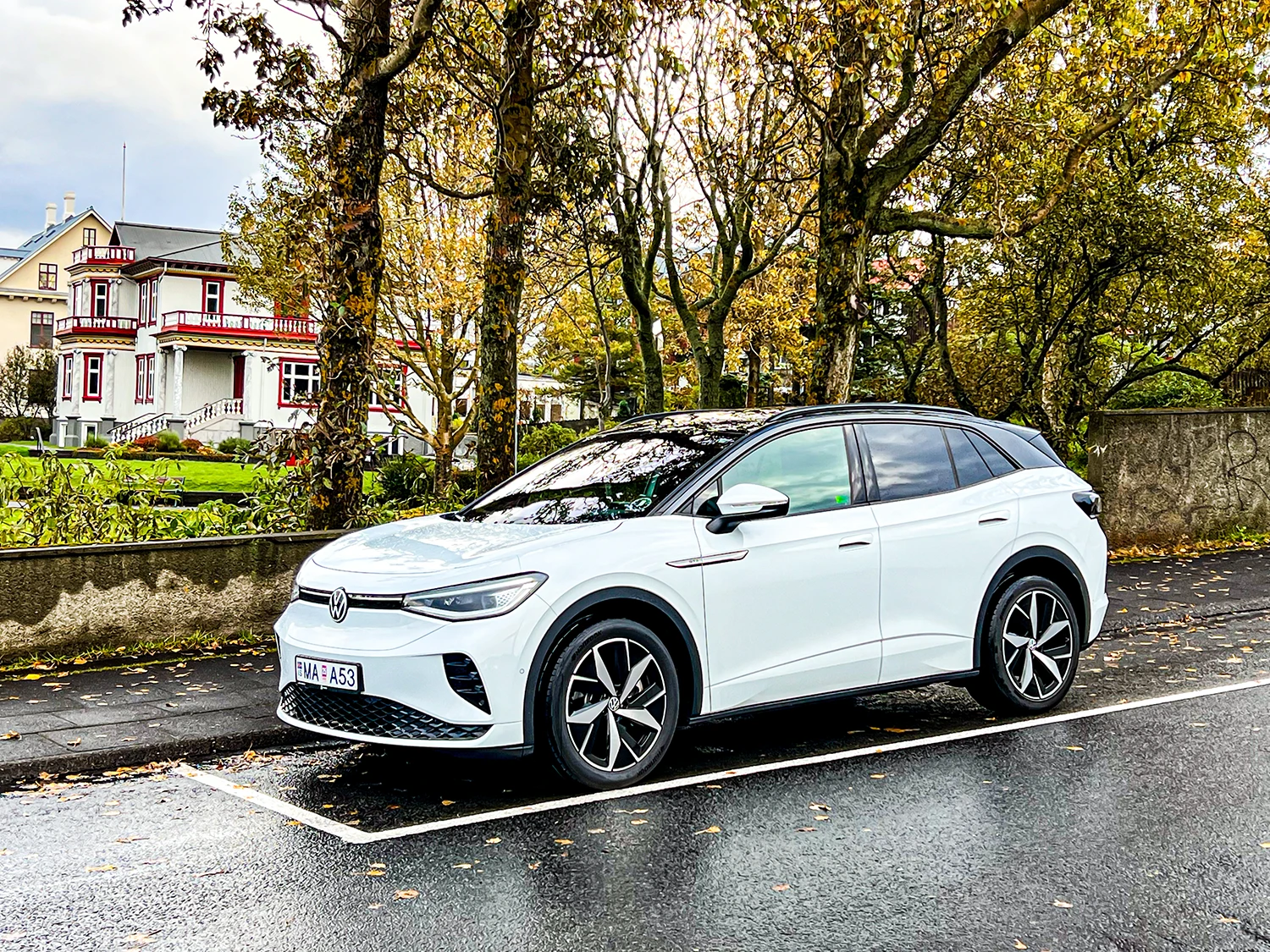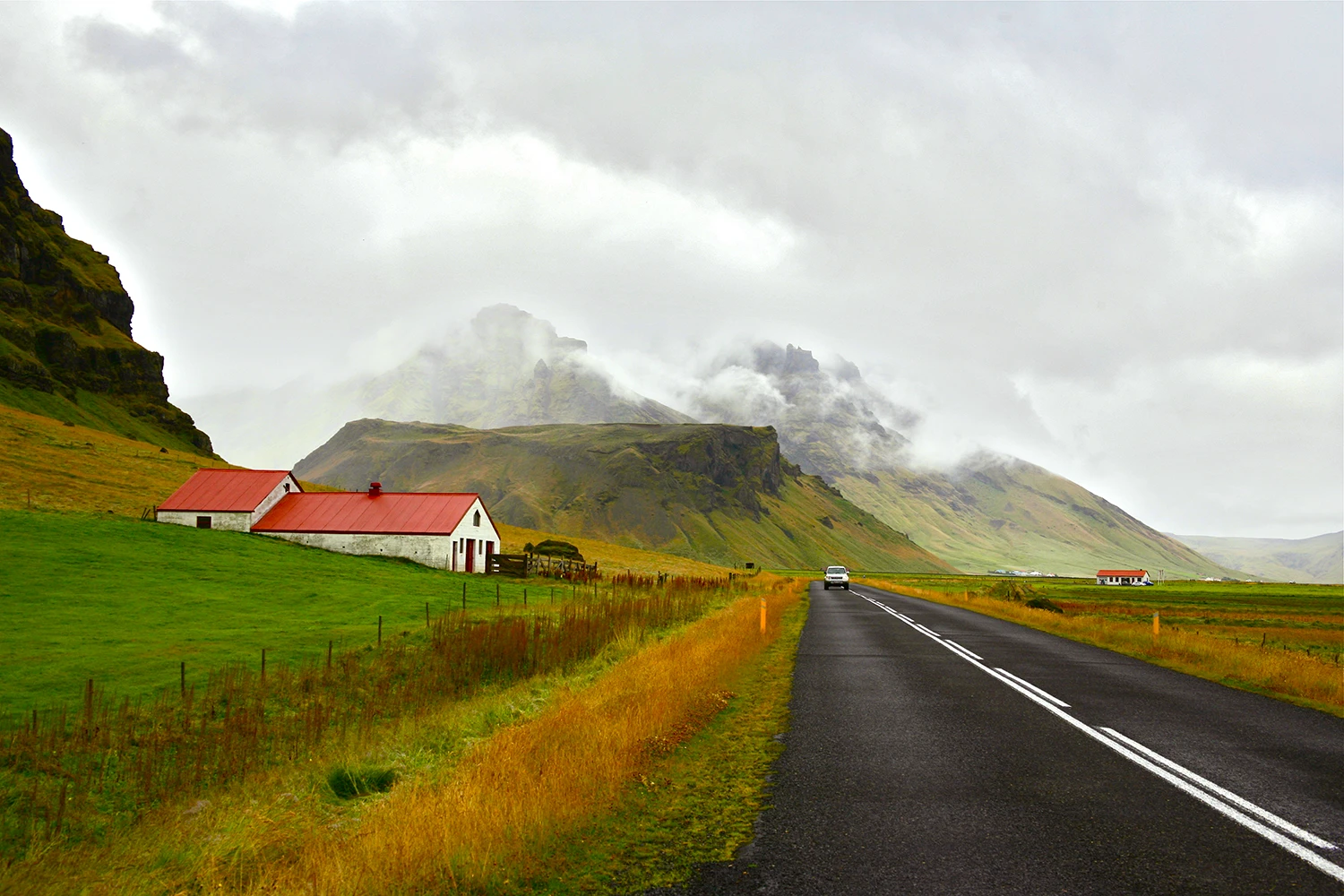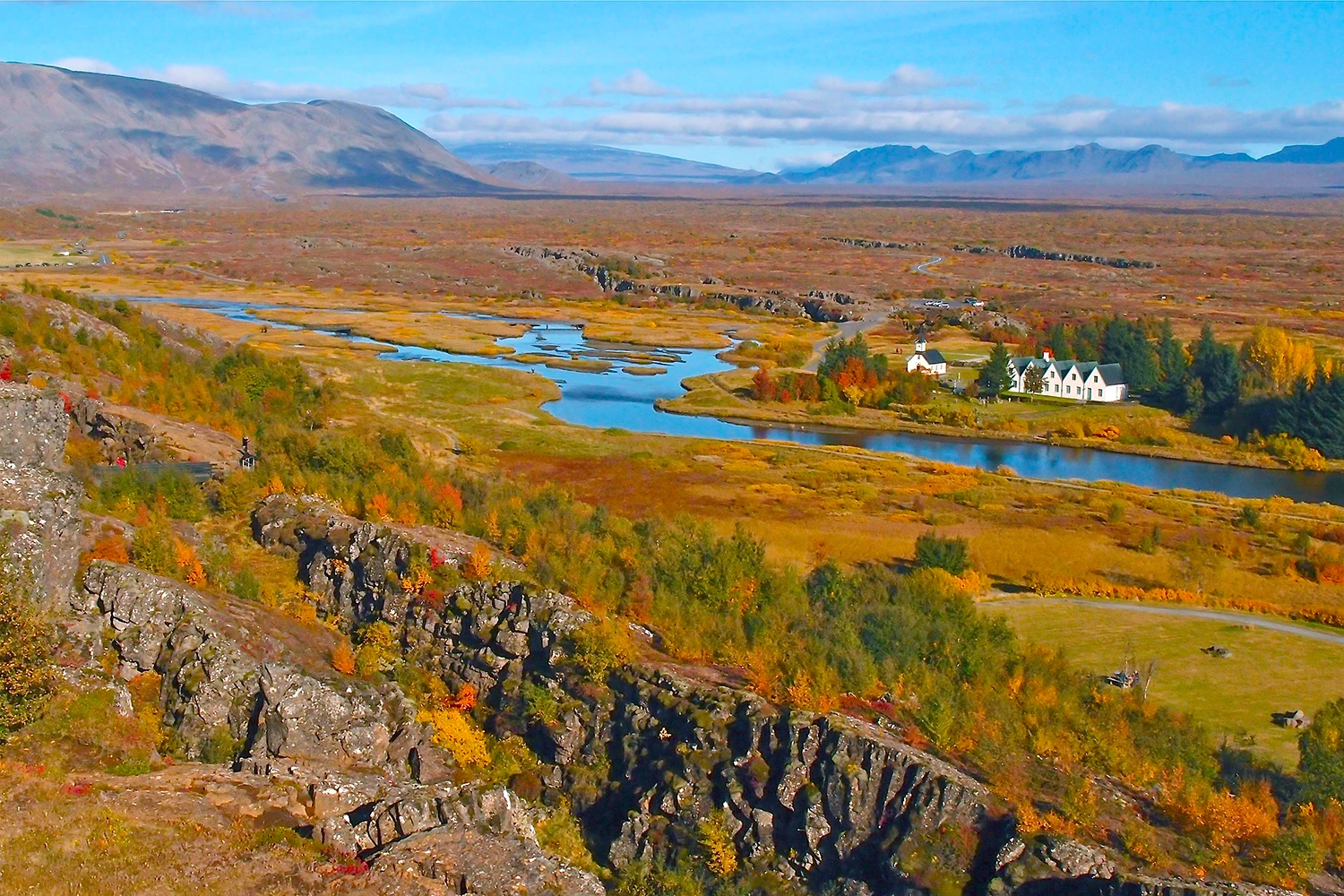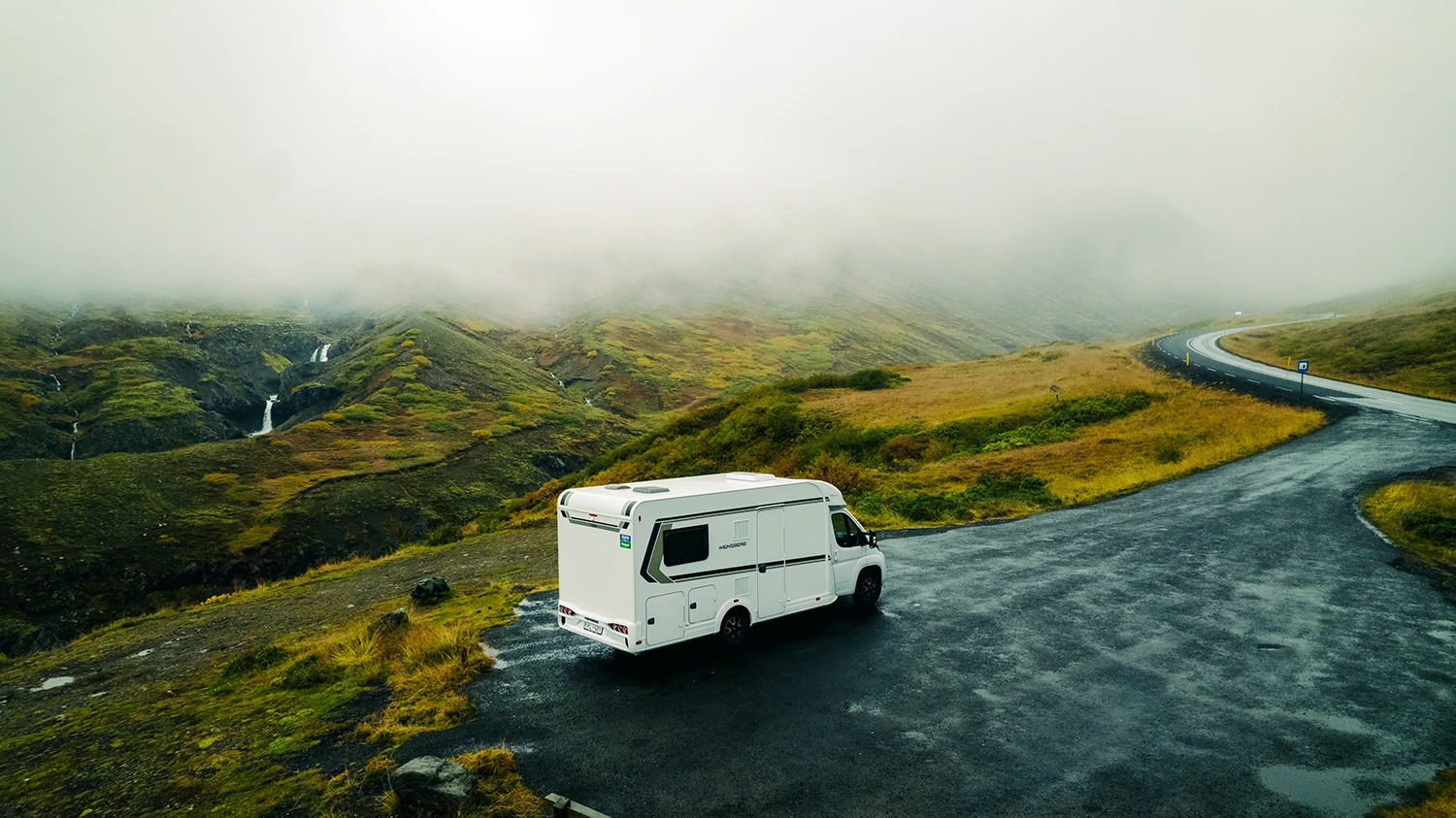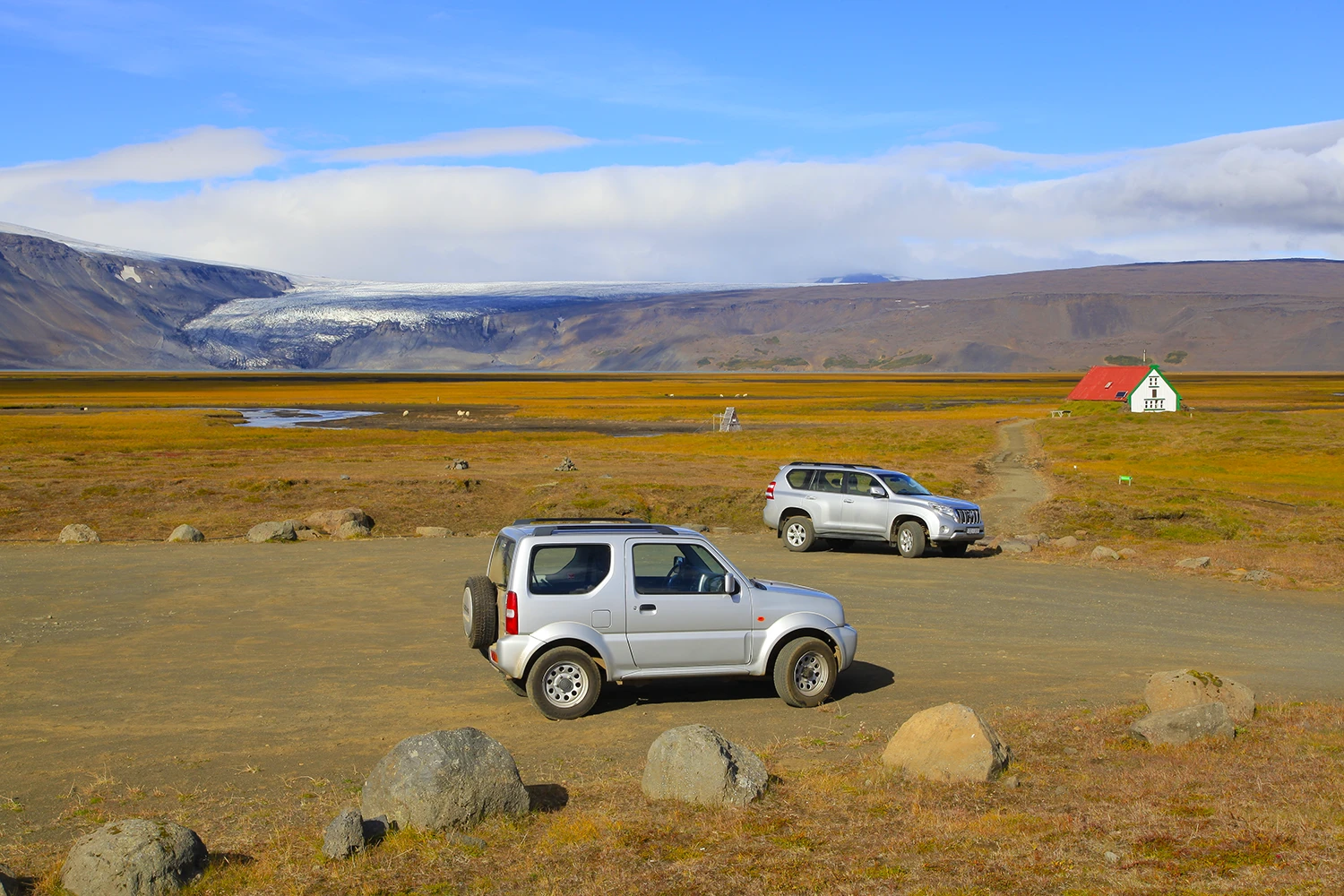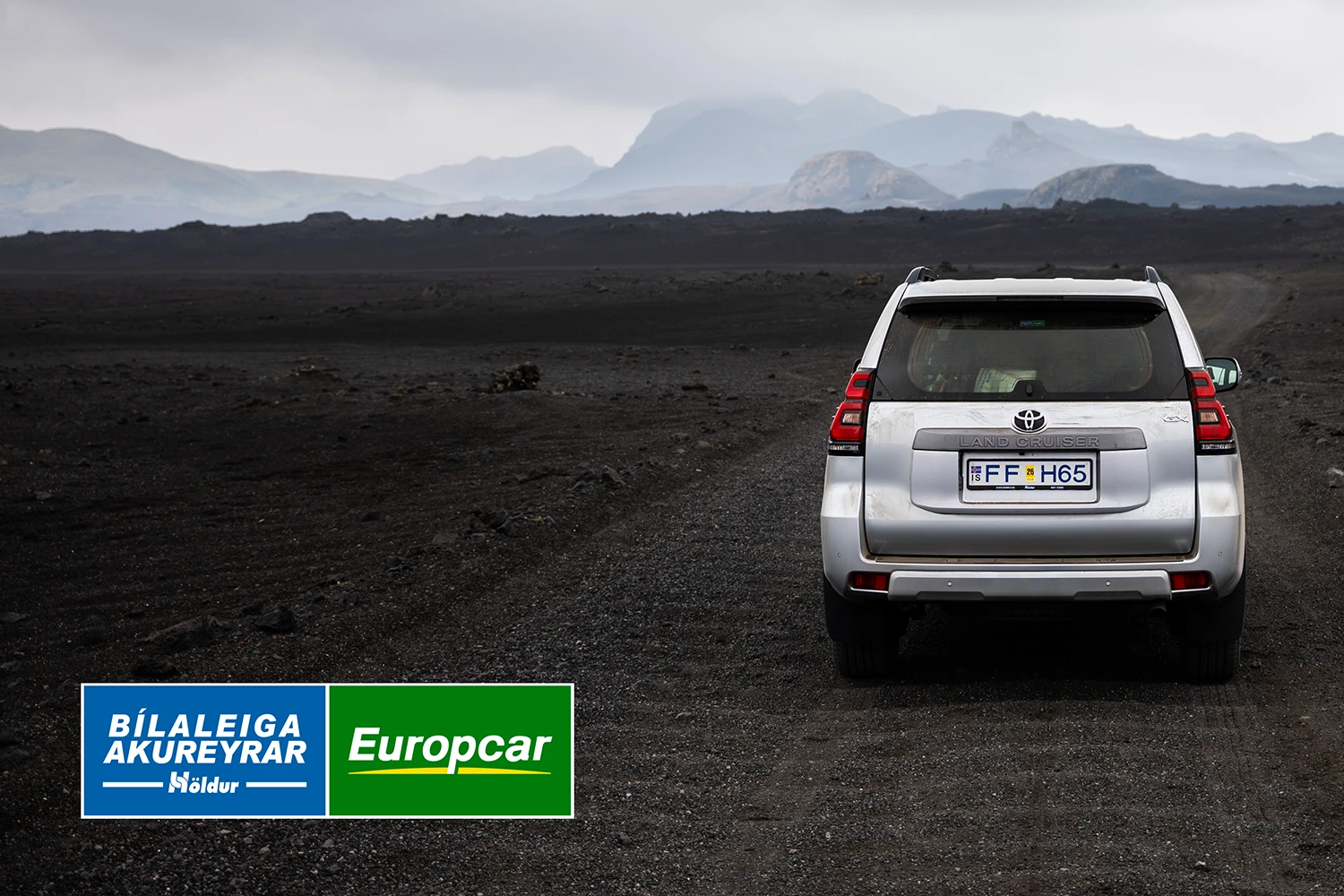- Vehicle Guide
- Passenger cars
- Estate
- Electric
- 4x4 SUVs
- Suzuki Jimny 4x4
- Dacia Duster 4x4
- Suzuki Vitara 4x4
- Suzuki Vitara auto 4x4
- Dacia Bigster 4x4
- Kia Sportage 4x4 Auto
- Kia Sportage PHEV 4x4 auto
- Mitsubishi Outlander PHEV 4x4 auto
- Toyota Rav4 4x4
- Toyota Rav4 4x4 auto
- Kia Sorento 4x4 auto
- Toyota Landcruiser 150 4x4 auto
- Toyota Landcruiser 250 4x4 auto
- Landrover Discovery 5 4x4 auto
- Landrover Defender 4x4 auto
- Prestige
- Minivans
- 4x4 Camper
- Motorhomes
- Driving in Iceland
- Our services
- Locations & Hours
- Travel Inspiration
- South Iceland: A complete guide
- Reynisfjara Beach in Iceland - Your Guide to a Safe Visit
- Best Times to Visit the Golden Circle in Iceland
- North Iceland: A Complete Guide for Drivers
- East Iceland A Complete Guide for Drivers
- West Iceland The Complete Driver’s Guide
- Your Ultimate Guide to Exploring Iceland’s Ring Road
- Driving the Diamond Circle in Iceland: Your Ultimate Guide
- Driving Iceland's Golden Circle: Your Ultimate Guide
- A 10-Day Itinerary in Iceland: Tips + Ideas
- The Perfect Itinerary for 7 Days in Iceland
- The Best Time to See the Northern Lights in Iceland with a Rental Car
- Renting a Camper in Iceland: The Complete Guide
- Getting to Iceland: A Comprehensive Guide on How to Reach the Land of Fire and Ice
- Nature Bath Locations in Iceland: A Complete Guide
- Iceland with Kids: A 5-Day Self-Drive Itinerary
- Winter Driving in Iceland: A Comprehensive Overview for Foreign Tourists
- The Total Solar Eclipse in Iceland – August 12, 2026
- Exploring Iceland's National Parks on a Self-Drive Adventure
- Exploring Iceland's Wonders: A Comprehensive Guide to Activities and Car Rentals
- Springtime in Iceland – Your Comprehensive Travel Guide
- Exploring Iceland's Most Popular Highland Routes
- The Pearls of Westfjords: The Ultimate Guide
- Exploring Iceland's Hidden Gems | Off-the-Beaten-Path Adventures
- Driving in Iceland in June: Tips for a Safe and Scenic Summer Road Trip
- Driving in Iceland in July: Tips, Routes & Rentals
- Driving in Iceland in August: Late-Summer Freedom on the Open Road
- Guide to Skaftafell Iceland Self-Drive A Journey Through Fire and Ice
- Eco-Friendly Road Trips in Iceland, Sustainable Travel Tips
- Photographer’s Paradise Top Scenic Drives in Iceland for Stunning Shots
- Iceland's Folklore and Legends A Road Trip Through Mythical Sites
- Iceland’s Midnight Sun and How to Make the Most of 24-Hour Daylight
- Exploring Iceland’s Viking Heritage: Top Historical Sites
- Chasing Waterfalls: A Road Trip to Iceland’s Most Spectacular Cascades
- Iceland's Volcanic Wonders: A Self-Drive Tour of Active and Dormant Volcanoes
- Tee Off in the Land of Fire and Ice: A Guide to Golfing in Iceland
- Birdwatching in Iceland: Puffins and Beyond
- Iceland’s Diverse Beaches: Beyond the Black Sands
- Icelandic Horses: The Unique Breed of the North
- Beyond the Ring Road: Iceland’s Hidden Scenic Drives
- Iceland’s Ice Caves: A Year-Round Adventure
- Wildlife Watching in Iceland: Where and When to Go
- Iceland’s Hidden Hot Springs: A Self-Drive Guide to Secret Soaks
- Navigating Iceland’s Weather: What to Expect Each Season
- Tröllaskagi Peninsula: Iceland’s Mountainous Marvel — A Scenic Road Trip with Höldur
- Mastering Iceland's Roundabouts: A Driver’s Guide
- Essential Tips for Renting a Car in Iceland
- Navigating Iceland’s One-Lane Bridges: Your Guide to Safe and Scenic Crossings
- Exploring Iceland’s Film Locations by Rental Car
- 5 Must-Visit Destinations Within Two Hours of Keflavík Airport
- Seasonal Car Rental Tips for Iceland’s Summer Festivals
- Understanding Iceland's F-Roads: How to Drive Safely Into the Highlands
- What Makes Iceland Unique: Top 15 Highlights for an Unforgettable Journey
- Driving and Hiking in Harmony: Explore Iceland's Natural Wonders with Höldur Car Rental
- Best Car to Rent in Iceland?
- Avoiding Common Car Rental Mistakes in Iceland
- Making Your Car Rental in Iceland Child-Friendly: Tips for Stress-Free Family Travel
- Exploring Akureyri, Iceland’s Northern Gem, with EasyJet and Europcar
- Renting a Manual or Automatic Car in Iceland
- Discover the Arctic Coast Way in Iceland with Höldur Car Rental
- How to Save on Fuel Costs During Your Iceland Road Trip
- Electric vs. 4x4 Rentals in Iceland: Which is Right for Your Trip?
- Top Scenic Detours Off Iceland's Ring Road
- Top Safety Tips for First-Time Drivers on Iceland’s Roads
- Cultural Pit Stops Along Iceland’s Ring Road
- Your Guide to Exploring Stuðlagil Canyon by Car: Iceland’s Basalt Beauty Awaits
- Day Trip Ideas From Reykjavik by Rental Car
- Visit Glymur Waterfall: The Ultimate Self-Drive Adventure from Reykjavík
- Discover the Volcanic Wonders of Lake Mývatn by Car
- Discovering the Magic of Snæfellsnes Peninsula by Car
- Your Self‑Drive Guide to Gullfoss Waterfall
- A Guide to Seljalandsfoss Waterfall in Iceland: Explore by Car
- Exploring Reykjanes Peninsula A Self Drive Guide
- Exploring Iceland Landmannalaugar by 4x4
- A Beginner's Guide to River Crossings in Iceland
- Best Car Rental Offers for Iceland’s Summer Adventures
- Your Self‑Drive Guide to Þingvellir National Park
- Your Ultimate Guide to Geysir, Iceland: All You Need to Know
- How to Pay for the Vaðlaheiðargöng Tunnel
- Your Guide to Visiting Jökulsárlón Glacier Lagoon
- The Diamond Beach in Iceland: A Sparkling Wonder Worth Visiting
- Parking fines in Iceland: how to pay and what to do if you receive one
- Where to find overnight parking in Reykjavík: a local’s guide for travellers
- How to park for free in Reykjavík: tips to save on your Iceland trip
- How to pay for parking in Reykjavík - A friendly guide for drivers in Iceland
- Game of Thrones Filming Locations in Iceland: A Self-Drive Guide
- How to Choose the Right Car Rental at Keflavík Airport
- Flying Within Iceland: Your Guide to Domestic Routes and Regional Airports
- Top 3 Must-See Attractions on Iceland's Golden Circle
- Hidden Gems Along the Golden Circle Route
- Your Essential Guide to Iceland: Currency, Culture, and Car Rental Tips
- How to Plan the Perfect Golden Circle Self-Drive Tour
- The Comprehensive Guide to Rental Car Sizes at Keflavik Airport
- Húsafell & Hallmundarhraun: Hidden Lava Field Adventures by Car
- Iceland Weather by Month: What to Expect and How to Drive Safely with Holdur Car Rental
- A Guide to Iceland’s Quirky Roadside Attractions
- Exploring Iceland’s Lava Tubes | Self-Drive Cave Adventures with Höldur Car Rental
- Coolcation in Iceland: Self-Drive Your Summer Escape to the North
- Driving Iceland’s Coastal Roads: A Guide to Lesser-Known Peninsulas
- Top Tips for Driving in Iceland Safely Year-Round
- The Best Rest Stops and Viewpoints Along Iceland's Ring Road
- Driving in Iceland in September: Embrace the Autumn Adventure
- Your Guide to Exploring Fjaðrárgljúfur – South Iceland’s Fairytale Canyon
- Explore Reykholt on a Self-Drive Tour in Iceland
- How to Choose the Right Insurance for Your Iceland Car Rental
- Hiking Múlagljúfur Canyon: Iceland’s Hidden Gem You Can’t Miss
- Understanding Iceland's Weather and How It Affects Driving Conditions
- Dyrhólaey: A Complete Self-Drive Guide to Iceland's Breathtaking South Coast
- Where to See Iceland’s Tectonic Plates Up Close
- Scenic Journey on Kjalvegur Road 35 Reykjavik to Akureyri
- Guide to Visiting Svartifoss with a Rental Car
- Kerið Crater Lake in Iceland: A Self-Drive Guide
- Your Complete Guide to Stokksnes, Iceland with a Rental Car
- Hengifoss Waterfall in Iceland: The Ultimate Self-Drive Guide
- Your Complete Guide to Visiting Skógafoss Waterfall with a Rental Car
- Into the Heart of Þórsmörk: Iceland’s Valley of Thunder
- Dynjandi Waterfall in Iceland: The Ultimate Self-Drive Guide
- Visiting Ásbyrgi Canyon in North Iceland by Car: A Complete Self-Drive Guide
- Driving in Iceland in October: Embrace the Autumn Transition
- Hraunfossar: Iceland’s Hidden Gem for Self-Drive Travellers
- Barnafoss Waterfall: Iceland’s Raging Cascade with a Legend
- Driving in Iceland in November: Your Complete Guide to a Spectacular Autumn Adventure
- Fishing in Iceland: All You Need to Know
- Öxarárfoss Waterfall in Iceland: A Self-Drive Guide with Höldur
- Life in Iceland: Essential Guide to Living in the Land of Fire and Ice
- People of Iceland - 12 Fun Facts About Icelanders
- Glaumbær Turf Houses: A Self-Drive Guide to Iceland’s Living History
- Húsavík: Whale Watching Capital of Iceland
- Svínafellsjökull Glacier: A Self-Drive Guide to Iceland’s Ice Giants
- Kirkjubæjarklaustur: A Historic South Coast Gem
- Vík í Mýrdal: South Iceland’s Coastal Treasure
- Namaskard: A Self-Drive Guide to Iceland’s Geothermal Wonderland
- Laufás Heritage Site: Where Iceland’s Past Lives On
- Navigating Iceland's Gravel Roads: Tips for a Safe and Smooth Drive
- Iceland's Best Stargazing Spots for Self-Drive Travellers
- Iceland's Best Picnic Spots: Scenic Stops for Self-Drive Adventures
- Top 5 Family-Friendly Hiking Trails Accessible by Rental Car
- 15 Tips for Travelling to Iceland
- How to Plan a Winter Photography Road Trip in Iceland
- Visiting Gljúfrabúi Waterfall — A Self-Drive Guide
- How to Spot Puffins in Iceland: A Self-Drive Adventure
- Your Essential Guide to Winter Tyres and Safe Driving in Iceland
- Iceland’s Most Active Volcanoes: A Self-Drive Guide
- Iceland’s Most Scenic Bridges and River Crossings: A Self-Drive Guide
- Iceland’s Most Instagrammable Spots for Self-Drive Travellers
- How Cold Is It in Iceland During Winter? A Self-Drive Guide
- Explore Dimmuborgir: A Self-Drive Guide to Iceland's Dark Castles
- The Ultimate Guide to Iceland’s Top 5 Waterfalls by Car
- Iceland’s Best Scenic Routes for Autumn Foliage: A Self-Drive Guide
- The Best Time to Visit Iceland for Self-Drive Travellers
- Self-Drive Adventures to Iceland’s Remote Lighthouses
- Selfoss Waterfall Self-Drive Guide: Explore Iceland Your Way
- All About the Icelandic Sheep
- Vestrahorn: A Self-Drive Guide to Iceland’s Stokksnes Peninsula
- Höfn, Iceland: The Lobster Town Self-Drive Guide
- Exploring Arnarstapi: A Self-Drive Guide
- A Guide to Iceland's Seasonal Foods for Your Road Trip
- Hverfjall Crater, Iceland: A Self-Drive Guide
- Self-Drive Guide to Visiting Askja
- A Self-Drive Guide to Visiting Kerlingarfjöll
- A Self-Drive Guide to Gunnuhver Geothermal Area
- Skriduklaustur, Iceland: A Self-Drive Guide to History & Culture
- Your Ultimate Guide to Visiting the Blue Lagoon in Iceland
- Borgarnes, Iceland: Top Things to Do & Self-Drive Guide
- A Guide to Glaciers in Iceland
- Car Rental Insurance in Iceland: What’s Usually Included, What’s Not & How to Choose
- Best Car Models for Iceland’s Terrain: Recommendations by Route
- Solo Traveller’s Guide to Self-Driving in Iceland
- Exploring Iceland’s Arctic Circle: What to See and Do
- How to Plan a Budget-Friendly Road Trip in Iceland
- The History of Iceland’s National Day: A Self-Drive Celebration
- Where to Spot Whales in Iceland: A Self-Drive Guide
- The Diamond Circle vs. The Golden Circle: Which Route is Right for You?
- Embracing a Greener Journey: Sustainability in Iceland
- Granni: A Self-Drive Guide to Iceland’s Neighboring Waterfall
- Háifoss: A Self-Drive Guide to Iceland’s Tallest Waterfall
- Iceland's Best Camping Spots for Road Trippers
- Gjáin: A Self-Drive Guide to Iceland’s Hidden Oasis
- Iceland's Hidden Waterfalls: Beyond the Tourist Trails
- Hjálparfoss: A Self-Drive Guide to Iceland’s Helping Falls
- Seasonal Self-Drive Itineraries in Iceland: What’s Open When?
- Kirkjufell: A Self-Drive Guide to Iceland’s Most Photographed Mountain
- Fjallabak Nature Reserve: A Self-Drive Guide to Iceland’s Rugged Highlands
- Hrafntinnusker: A Self-Drive and Hiking Guide to Iceland’s Obsidian Wilderness
- When to Visit Iceland: Northern Lights and Ice Caves vs. Hiking and Highland Adventures
- Visiting Laugarvatn Fontana Spa with a Rental Car: A Relaxing Icelandic Getaway
- Hvítserkur Rock: A Self-Drive Guide to Iceland’s Dragon of the North
- Skiing in Iceland: A Self-Drive Guide for Winter Adventurers
- Visiting the Mývatn Nature Baths by Car: A Self-Drive Guide
- Visiting Vök Baths in East Iceland: A Self-Drive Guide
- Visiting Skútustaðir Pseudo-Craters: A Self-Drive Guide
- Visiting Hljóðaklettar: A Self-Drive Guide on the Diamond Circle
- The Ultimate Guide to Exploring Reykjavik with a Rental Car
- Visiting Seljavallalaug: A Hidden Gem in South Iceland
- Guide to Sólheimajökull Glacier by Iceland Car Rental
- Eyjafjallajökull: Iceland’s Glacier Volcano
- Ísafjörður, Iceland: Your Ultimate Self-Drive Guide to the Westfjords
- What Continent is Iceland In? A Traveler's Guide
- Katla Volcano: A Guide to Iceland's Sleeping Giant
- The Magic of Icelandic Water: A Traveler's Guide
- A Guide to Exploring Akureyri by Rental Car
- A Self-Drive Guide to the Krafla Volcanic Region
- 12-Day Iceland Self-Drive: The Complete Itinerary
- Hekla Volcano: A Self-Drive Guide to Iceland's Gateway
- Visiting Deildartunguhver: A Self-Drive Guide to Europe’s Most Powerful Hot Spring
- Exploring Borgarfjörður: A Self-Drive Guide to West Iceland
- Exploring Stórurð: A Self-Drive and Hiking Guide to East Iceland
- Visiting the Forest Lagoon in North Iceland: A Self-Drive Guide
- Driving in Iceland in December: Embrace the Winter Wonderland
- Exploring Grábrók: A Self-Drive Guide to Iceland’s Volcanic Crater
- Exploring Látrabjarg: A Self-Drive Guide to Iceland’s Westernmost Point
- Iceland Car Hire Tips for UK Drivers: What You Need to Know
- 4-Day Iceland Winter Itinerary: The Best of the South
- Mount Mælifell: Iceland’s Emerald Volcano
- How Long to Drive Around Iceland? A Self-Drive Guide
- Driving in Iceland in January
- Exploring Djúpavík: A Self-Drive Guide to Iceland’s Remote Westfjords
- What to Wear in Iceland: Tips for Every Season
- Things to Do in Stykkishólmur: A Self-Drive Adventure Through Iceland’s Magical West
- The Secret Lagoon: Iceland’s Hidden Gem of Relaxation and Discovery
- The Silver Circle of Borgarfjörður: Your Ultimate Self-Drive Guide
- Snæfellsjökull: A Journey to Iceland’s Glacier of Legends
- Car Rental Iceland 4x4: Best 4WD Options for Your Trip
- What to See in Iceland: 20 Places You Don’t Want to Miss
- How to Prepare for an Iceland Road Trip
- Your Guide to Visiting Fagrifoss Waterfall by Car
- Exploring Stakkholtsgjá Canyon: A Self-Drive Adventure in Iceland
- Kolugljúfur Canyon: A Guide to Iceland's Hidden Gem
- Exploring Kvernufoss: A Hidden Gem in South Iceland
- Skógar Museum: A Journey Through Iceland's History
- 2 Days in Iceland: The Perfect Itinerary
- Exploring Berserkjahraun: A Self-Drive Guide to Iceland’s Lava Fields
- Driving in Iceland in February: Your Complete Guide
- Iceland Daylight Hours by Month: Planning Your Trip
- Petra’s Stone Collection: A Self-Drive Gem in East Iceland
- Iceland's New Kilometer-Based Road Tax: Everything You Need to Know
- Krýsuvíkurbjarg Cliffs: Self-Drive Guide to Iceland’s Wild Coast
- Brimketill: The Reykjanes Peninsula’s Natural Lava Pool
- Exploring Eldhraun Lava Field: A Self-Drive Guide to Iceland’s Volcanic Marvel
Parking in Iceland: What You Need to Know
Every country has its own parking rules and regulations, and Iceland is no different. Before you buckle up and drive your rental car away, it’s worth understanding some of the basics of parking in Iceland.
In this guide, we’ll share everything you need to know for a safe and enjoyable road trip. Read on to learn about Iceland’s parking zones, leaving your car in towns, airports, and visitor attractions, and how to pay.
- Discover more in our comprehensive guide to driving in Iceland
Parking in Iceland: The basics
Parking in Iceland is much like parking in other countries worldwide. You’ll find a range of different parking options, tariffs, and rules in different towns and regions across the country.
That means it’s always essential to check the signs in your specific location before you leave your car, otherwise you may face a fine. Luckily, though, you’ll find car parks and on-street parking spaces really clearly signposted. So, if you need to pay, that should be clear.
We’ll share some more specific information and local rules below. But if you’ve just arrived in Iceland and need to quickly get up to speed, here are some basic things to keep in mind.
- If you’re driving a lot, download the Parka and EasyPark apps. Many car parks across Iceland require that you pay with one of these apps. For instance, you can use Parka to pay for parking in Reykjavík and Akureyri, as well as at many tourist destinations.
- Look out for parking zones and resident spaces in towns. Different charges apply in different areas of Iceland’s main towns, including Reykjavík and Akureyri. In most towns, some spots will be reserved for residents, so please don’t park there. You can find out more about parking zones below.
- When parking on the street, only park in marked parking spaces that are on your side of the road. In Iceland, it’s illegal to park on-street if there’s no marked bay. You shouldn’t cross oncoming traffic to park either.
- Pay parking fines quickly if you receive them. If you receive a fine, you’ll get a discount if you pay it quickly. If you don’t pay it, it will be sent to your car rental company, who may apply a surcharge.
- Be aware that you’ll often need to know your number plate in order to pay. It’s worth taking a photo of your rental car’s plate so you have it to hand when you need it. You will also find your plate number on your car key.
- If you’re driving a campervan or motorhome, only park overnight in designated spaces. Campsites are your best bet. Please don’t just park up by the side of the road—it’s dangerous for everyone.
How to pay for parking in Iceland
Every car park in Iceland has its own specific charges, which you’ll need to check whenever you park your vehicle. While the information here is a general guide, always refer to local signs for the most up-to-date details on costs.
Usually, you’ll have to pay for parking in any zoned parking spaces, private car parks, and parking lots at national parks and other visitor attractions. If a car park is free, it will tell you.
If you’re required to pay for parking in Iceland, there are 2 most common ways to complete the transaction:
- Pay with apps such as Parka or EasyPark. These are often the simplest ways to pay. You’ll need to enter your vehicle’s information and your payment details and then you can pay from the apps when you travel across the country. Often, car parks have automated number plate recognition too, which automatically tells the app when you’ve arrived.
- Pay with card or device at payment metres. You’ll usually need to enter your registration number into the ticket machine and select how long you want to stay. It’s almost always best to pay with your card or device. These days, it’s less common to pay with cash, however it is often still possible. Make sure you pay before leaving the car park, as most don’t offer payment options at the gate.
You may come across other payment options too, however they’re less common. These include manned ticket kiosks, cash metres, and sometimes QR codes that direct you to online payment pages.
If the car park charges a fee, please pay it. If you don’t, you’re very likely to be fined.
Parking fines and regulations in Iceland (and how to avoid them)
Parking officers in Iceland are very attentive. Iceland is also a relatively expensive country, where parking fines can be quite costly. Combined, these factors mean that it’s best to do everything you can to avoid fines wherever possible.
You’ll likely receive your fine as a ticket on your window. If you don’t pay it in the first few days, though, the fine will be sent to the owner of the vehicle. If you’re driving a rental car, you’re still liable for this fine and the rental company may immediately charge it to your payment card.
In Iceland, you’ll be fined if you’re caught doing any of the following:
- Not paying for parking
- Parking in spaces for people with disabilities. These are clearly marked.
- Parking on-street in areas that don’t have marked spaces
- Parking in the direction of oncoming traffic
- Parking off-road
- Staying the night in a campervan outside of a designated area such as a campsite.
You can also be fined if you’re caught speeding, driving dangerously, or if you haven’t paid for a toll or tunnel in Iceland. To avoid these fines, drive safely, park legally, and pay for parking when required.
How much are parking fines in Iceland?
Fines are set locally and differ from region to region. That said, all of them have a policy where you’ll receive a discount if you pay for your fine immediately. And if you don’t pay it at all, you can expect additional fees to be added to the initial cost.
To give you a general idea of the cost of parking fines in Iceland, let’s look at the example of Reykjavík. In the capital, there are 3 main types of fine:
- Extra parking tariff. Say you’ve parked without paying or you’re parked for longer than you’ve paid for. You’ll receive an initial fine of 4,500 ISK (about €30). But if you settle it within 3 days, you’ll get a 1,100 ISK discount. If you don’t pay within 28 days, the charge doubles.
- Parking violation charge. If you park on a pavement, too close to a pedestrian crossing, or not within a parking bay, you’ll be fined more steeply. The cost is 10,000 ISK, with a 1,100 ISK discount if you pay within 3 business days.
- Charge for parking in designated spaces. Park without a permit in a space for people with disabilities and you’ll receive a large fine of 20,000 ISK. You’ll receive the same 1,100 ISK discount if you pay within 3 days. But fees double if the fine goes unpaid after 28 days.
As we said, parking fines are expensive, particularly if you don’t pay them immediately.
How to pay parking fines in Iceland
If you get a parking fine on your windscreen, you have a couple of ways to pay it.
- Pay online. Many regions in Iceland have online portals for paying fines, such as the Reykjavík city website. The details you need to access the site can be found on the parking ticket.
- Go to a bank. Simply take your ticket to a bank desk and tell them you need to pay. They’ll help you do everything you need to do. Bear in mind that most banks are closed at the weekend.
If you don’t pay, the ticket will be sent to your car rental company. They may charge it directly to your credit card, or they’ll expect you to pay (with an additional surcharge) when you return the vehicle. Read more about parking fines in Iceland and how to pay and what to do if you receive one.
A guide to parking zones in Iceland
Parking zones are areas in Iceland’s towns with various charges for on-street parking. Typically, parking in very central areas is more expensive.
As we’ve mentioned throughout this guide, parking rules differ locally. However, usually, these zones are clearly colour coded, with different colours referring to different charges. If you park in a private car park or multi-storey, these zones don’t apply.
Whenever you park in these coloured zones, make sure you check out the specific rules. Often, it may be free or less expensive to park during certain times.
Also, while it might be free to park outside of these zones, make sure you’re not parking in resident parking.
Parking zones in Reykjavík
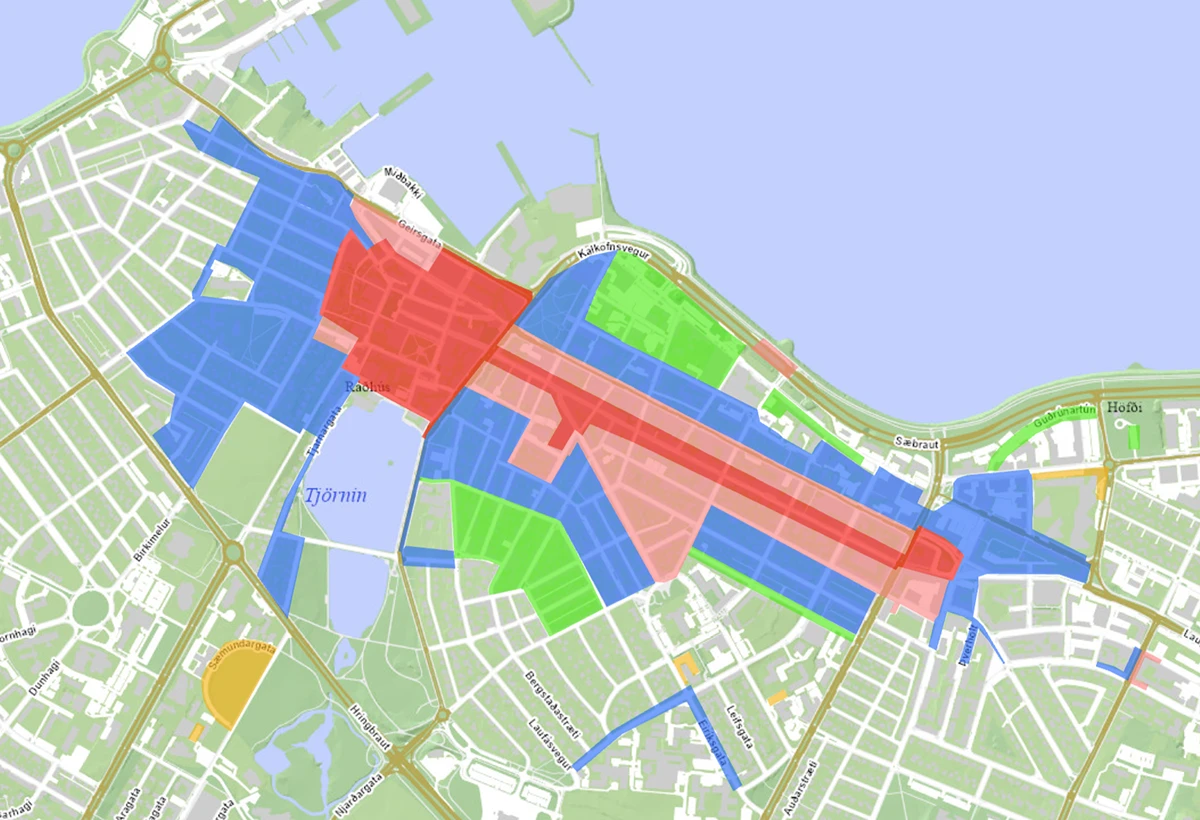 (Image source: Reykjavík city)
(Image source: Reykjavík city)
Reykjavík has 4 parking zones:
- P1: Red and pink. This is the most expensive zone. You’ll pay 630 ISK per hour, between 9am and 9pm during the week and between 10am and 9pm at weekends. The maximum stay is 3 hours.
- P2: Blue. You’ll pay 230 ISK per hour, between 9am and 9pm on weekdays and 10am and 9pm at weekends.
- P3: Green. 230 ISK per hour for the first 2 hours. After that, 70 ISK per hour. This zone applies only between 9am to 6pm on weekdays
- P4: Orange. 230 ISK per hour between 8am and 4pm on weekdays.
These prices and zones are always subject to change. Check local signs for details. Or, for up to date information before you park and an interactive map of parking zones, visit the Reykjavík city website.
Parking zones in Akureyri
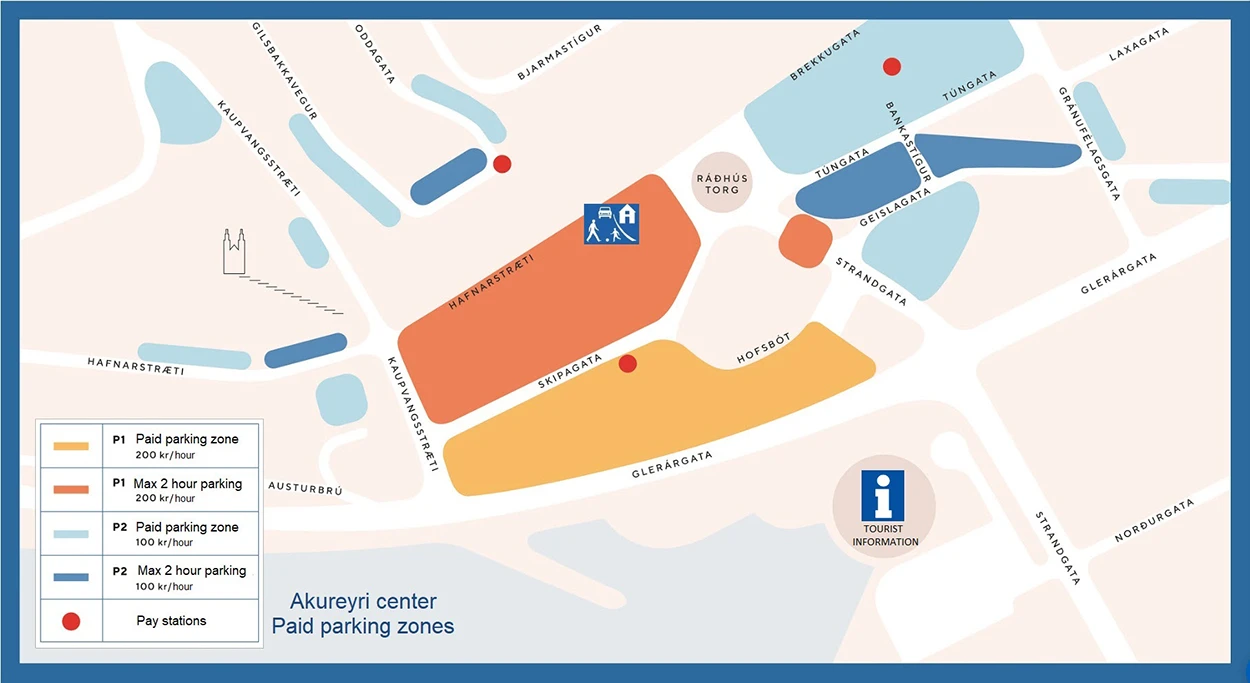 (Image source: Municipality of Akureyri)
(Image source: Municipality of Akureyri)
There are 2 parking zones in the Akureyri town centre. However, each of these zones has areas where you can only park for a limited time:
- P1: Light orange. Parking here is 218 ISK per hour.
- P1: Dark orange. 218 ISK per hour but with a limit of 2 hours.
- P2: Light blue. Parking is 109 ISK per hour.
- P2: Dark blue. 109 ISK per hour with a limit of 2 hours.
For up to date information, visit the website of Akureyri town.
Parking at Keflavík Airport
As at most airports around the world, parking at Keflavík can seem a little complicated. That’s because there are multiple options and in many cases it’s best if you book in advance.
- If you’re just dropping someone off or picking up, it’s free. There’s a large car park where you’re welcome to wait.
- If you’re leaving your vehicle, book in advance. You can select how long you need to stay and you can even choose a specific spot. This helps traffic flow in the car park. It’s best to book well ahead, as you may have less choice closer to your day of travel.
- If you’re returning your rental vehicle, head to their specific zone. You won’t need to pay to do this. However, follow the instructions given to you by Holdur car rental. See the location of our Return Station here.
If you prefer, or if you’re picking up your vehicle from either of our locations in Reykjavík, you can take public transport to and from the airport.
Parking at visitor attractions in Iceland
You’ll find car parks at or close to all major visitor attractions in Iceland. Often, you’ll have to pay for these. In fact, an increasing number of car parks that were once free are now charging, to cover the cost of maintenance.
If you’re a resident at a hotel, you’ll be able to park in their designated spaces. Typically, you’ll be issued with a parking pass or permit to display on your vehicle.
As ever, please look out for and abide by the local rules, as these can change from place to place.
Þingvellir National Park
You need to pay for parking at various car parks in the Þingvellir National Park. Specifically, you’ll have to pay if you park in car parks P1, P2, or P5, which are closest to Þingvallavatn lake.
Costs differ depending on where you park and what vehicle you’re driving. You don’t need to pay if you have a disability. The following charges are for a day ticket:
- Car, 5 seats or fewer: 1,000 ISK
- Car, 6-9 seats: 1,200 ISK
- Bus, 10-19 seats: 2,200 ISK
Payment can be made at a ticket machine via card or online at checkit.is.
Vatnajökull National Park
Within the Vatnajökull National Park, you have to pay if you park at Skaftafell or at the Jökulsárlón Glacier Lagoon. These fees include entrance to the national park.
- Jökulsárlón parking. The car park is very close to the glacier lagoon and is equipped with toilets, electric vehicle charging, and a food truck.
- Skaftafell parking. The car park is at the head of most of the trails through the reserve, including the path to Svartifoss. You’ll find a toilet and a shop.
When you pay, the ticket is valid until midnight of the same day. And if you want to visit both sites on the same day, you’ll receive a 50% discount on the second site you visit.
Charges are as follows:
- Car, 5 or fewer seats: 1,000 ISK
- Car, 6-9 seats: 1,300 ISK
You can make payment with the Parka app. If your vehicle is already registered on the app, your registration number will be registered as you enter.
Seljalandsfoss
The Seljalandsfoss car park is a very short and easy walk from the famous waterfall. In the carpark, there is a shop, cafe, and toilet. You can pay the 900 ISK parking fee by card at the ticket machine.
Be aware that the gravel car park can be muddy or icy depending on the weather.
Geysir Geothermal Area
Parking for Geysir is across the main road from the geothermal area itself. It’s next door to the Geysir Centre, the Geysir campsite, and a number of restaurants and hotels. Walk 200 metres and you’ll be in the heart of the geothermal area.
The parking is free and it’s open 24 hours a day. Even if the area is busy, you shouldn’t have any trouble finding a spot.
Gullfoss
Parking for Gullfoss is free. The car park is very large and you won’t struggle to find a space. You can also benefit from the local restaurant, toilets, and shop.
The waterfall itself is only a 5-minute walk from the main car park.
Geldingadalir (Fagradalsfjall)
With volcanoes erupting regularly in southwest Iceland, Fagradalsfjall is a very popular attraction for visitors to the country. However, the situation is changing there all the time, so it’s really important that you check for the latest updates here before you visit.
There are 2 main car parks, both to the south of the volcanic area. Both charge 1,000 ISK for a day. You can pay for both using Parka, at the following sites:
Remember that this is a live volcanic area, with the potential to change quite quickly. If you would prefer, you can take a tour to visit the site from Reykjavík.
Blue Lagoon
Parking at Blue Lagoon is free. There’s also free electric vehicle charging for guests of the Lagoon, as well as allocated disabled spaces.
To avoid peak times, it’s best to visit in the morning or evening. However, you shouldn’t have trouble finding a space at any time of day.
Parking for motorhomes and campervans
Motorhomes and campervans need to follow the same rules as everyone else in Iceland. But as you’re driving a larger vehicle, you may need to park in designated spaces for you. If those don’t exist, you can park as normal, as long as you do so safely.
Crucially, it is against the law to stay overnight outside of designated areas for campervans. That means you can’t sleep in your vehicle by the side of the road, in regular car parks, or somewhere off-road. You face a large fine if you’re caught doing so.
You’ll find campsites across the country where you park your campervan overnight. They typically come with electricity, as well as toilets and showers and often wifi.
Parking for people with disabilities in Iceland
If you’re registered as disabled, you’re welcome to use the many disabled parking spots across the country. Look for the blue spaces with a wheelchair icon, as you’ll see across the rest of Europe.
All major attractions have designated spaces for people with disabilities. You’ll also find them in town centres too. Typically, standard charges do not apply.
Parking an electric vehicle in Iceland
Iceland has a wide network of electric vehicle charging points and many of the main visitor attractions in Iceland will have complementary or paid chargers. Please only park in these spaces if you drive an EV and if you’re charging your vehicle.
Parking tips for visitors to Iceland
Parking in Iceland is much like parking anywhere else in the world. However, before you set off, bear in mind these following tips:
- Check the weather before going anywhere. Snow and heavy rain can make parking and driving generally more difficult. Always check the weather and road conditions before travelling, at road.is.
- Avoid peak times for easiest parking. Main visitor attractions can be busy between 10 and 4 at any time of year. Visiting outside these hours (if the weather and light permit!) can make parking easier.
- Only use designated spaces to park at the side of the road. If you’re on a road trip and want to stop to take a picture, please don’t just pull off the road. It’s illegal and dangerous.
Frequently asked questions about parking in Iceland
Is parking in Iceland free?
In Iceland, some parking is free and others charge a fee—it depends on where you’re parking. Most visitor attractions and towns have paid parking. Check locally for more details.
What happens if you don’t pay for parking in Iceland?
If you don’t pay for parking in Iceland, you’ll receive a parking ticket. You can pay this immediately to get a discount. However, if you don’t pay at all, you’ll receive an additional charge that will be sent to your car rental company. There is a risk that if you never pay, you can face legal action.
How much does it cost to park in Iceland?
Car parking costs vary depending on where you want to park. In some visitor attractions, you can expect to pay around 1,000 ISK for the day. In towns, hourly rates are more common.
How to pay a parking ticket in Iceland?
You can typically pay for parking using a debit or credit card at a parking metre. However, in many cases, car parks use an app such as Parka or EasyPark, so you can pay more conveniently.
Can you park anywhere in Iceland?
You should always stick to designated parking spaces when parking in Iceland. Parking by the side of the road is illegal if there isn’t a marked space.
How do you use a parking metre in Iceland?
Most parking metres in Iceland accept card. Simply enter the length of your stay and vehicle registration number if required, then pay.
Can I sleep in my car in Iceland?
You’re welcome to sleep in your car in Iceland. However, it is against the law to park your vehicle by the side of the road. If you’re exploring Iceland in a campervan, you need to park in a campsite or other designated parking area.
What does P2 mean in Iceland?
P2 refers to a particular parking zone in Iceland. In Reykjavík and Akureyri, for instance, P2 is the second-most expensive option.
Is parking free at Blue Lagoon Iceland?
Yes, parking is free at Blue Lagoon Iceland. There is also complimentary EV charging if you need it.
How much is a parking ticket in Iceland?
The cost of parking tickets vary depending on where you want to park. Often, you have to pay for parking by the hour, or there can be places where your ticket lasts the whole day.
Parking fines can vary too, particularly as you will typically receive a discount if you pay your fine within 3 days.
Explore Iceland by car with Höldur
Driving in Iceland is the best way to see the country. It gives you the freedom to move at your own pace, while enjoying the comfort of your vehicle.
Rent a vehicle for your Icelandic adventure with Höldur. We’re the largest car rental operator in Iceland, with over 8,000 vehicles and rental outlets across the country.
We can provide you with the perfect vehicle for your travel plans. Choose from our electric vehicles, campers, 4x4s and more.
Explore our range to book your vehicle today.

